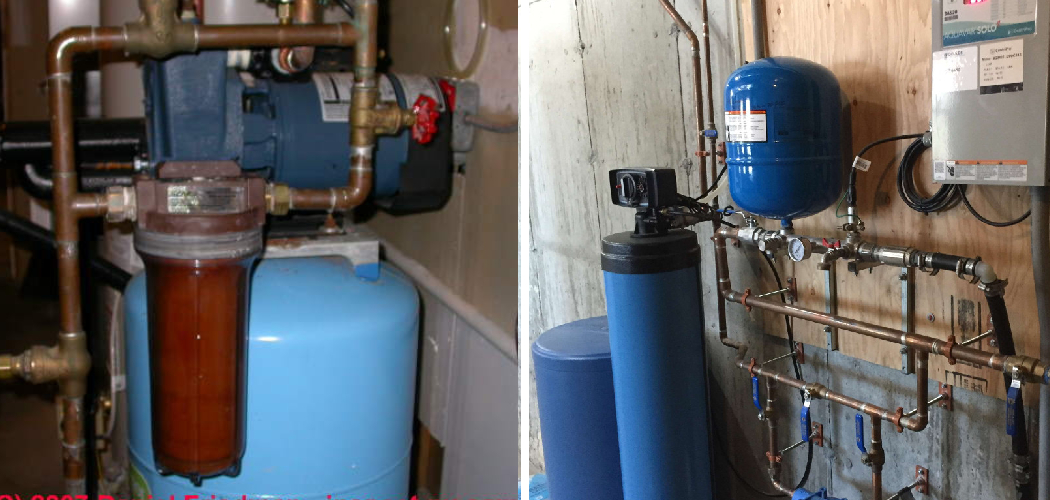Do you have a well pump that is constantly turning on and off, also known as “short cycling?” This can be a frustrating problem, but fortunately, it often has an easy fix.
A well pump that short cycle is a common problem in rural areas. If you’ve ever noticed that your well pump doesn’t seem to be running as long as it used to, or if it keeps going on and off without any rhyme or reason, you may have a problem with short cycling. This can be caused by a number of factors, but there are some things you can do to try to fix it. If your well pump is short cycling, it is important to diagnose and fix the problem as soon as possible.
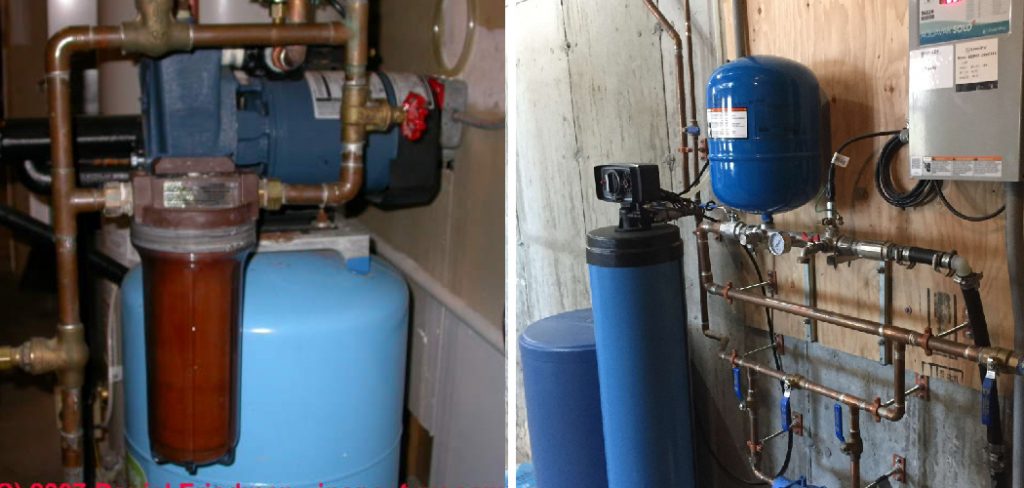
In this blog post, we will explain what causes a well pump to short cycle and how to fix short cycling well pump. We will also discuss some tips for preventing short cycling from happening in the first place. Read on to learn more! Stay tuned!
What Cause a Well Pump to Short Cycle?
The most common cause of a well pump short cycling is low water levels in the well. When the water level drops below the intake point, the pump will turn on and try to draw water, but it won’t be able to because there isn’t enough available.
As a result, it will turn off again shortly after turning on. This cycle can happen multiple times per minute and can lead to burning out the motor or other damage to the pump if not addressed quickly.
Other potential causes for short cycling include:
- A clogged or dirty filter
- Malfunctioning pressure switch
- Leaking pipes
- Incorrectly sized pump for the well depth and water demand
10 Easy Steps on How to Fix Short Cycling Well Pump
Step 1: Check the Water Level in the Well
The first step in fixing a short cycling well pump is to check the water level in the well. This can usually be done by visually checking the water level in the well or using a tool called a “well sounder.”
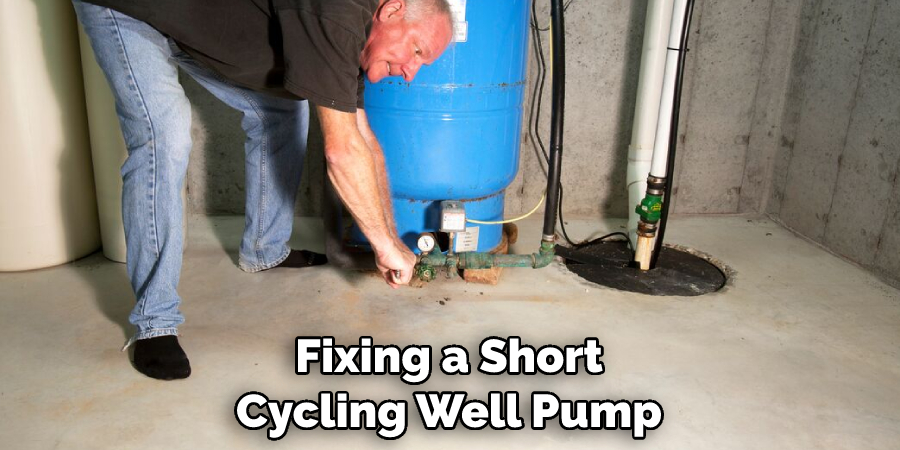
If the water level is low, try to determine how and why it became low. Once you identify any potential causes for low water levels, you can take steps to address them and bring the levels back up.
Step 2: Check and Clean the Filter
Another potential cause of short cycling is a clogged or dirty filter. Check the filter and clean or replace it if necessary. You can check by removing the filter and holding it up to a light source. If you see any dirt or debris blocking the flow of water, it is time for a new filter.
Step 3: Check the Pressure Switch
Check the pressure switch if the water levels and filter are not causing the short cycling. The pressure switch regulates when the pump turns on and off based on changes in water pressure in the system. If it is not functioning correctly, it can cause short cycling.
To test if this is the problem, disconnect the power to the pump and carefully remove the pressure switch cover. Use a multi meter to test for continuity at each pressure setting on the switch. If there is no continuity at one or more settings, then it may be time to replace the pressure switch.
Step 4: Check for Leaks in the System
Leaking pipes can also lead to short cycling of a well pump. Inspect all pipes and connections for any signs of leaks or damage. Repair or replace as necessary to prevent excessive water loss and short cycling. The signs of a leak is the presence of water on the ground or wet spots on any pipes.
You Can Check It Out to Fix a Sink Clogged with Grease
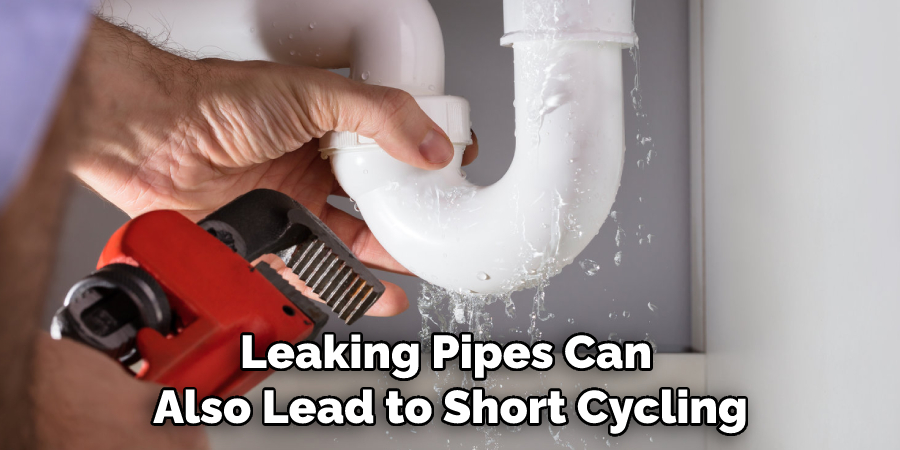
Step 5: Ensure the Pump is Sized Correctly
If all other potential causes have been ruled out, it may be that the well pump is not sized correctly for your well depth and water demand. In this case, you may need to install a new pump with the appropriate size and capacity. Be careful, an incorrectly sized pump can also lead to inadequate water pressure and flow in your home.
Step 6: Monitor Water Usage and Levels
To prevent future issues with short cycling, regularly monitor water usage and levels in the well. Take steps to conserve water usage where possible, such as fixing leaks or installing efficient fixtures, to avoid depleting water levels in the well. However, also make sure that there is enough water in the well to meet your needs and avoid short cycling.
Step 7: Check for Correct Sizing
If all other potential problems have been addressed and the well pump is still short cycling, it could be a sign that the pump is not correctly sized for the well depth and water demand. In this case, replacing the pump with one that is properly sized for your needs may be necessary.
Step 8: Use a Tank to Store Water
If you live in an area with seasonal fluctuations in water levels, consider installing a storage tank to ensure a steady water supply during dry periods. This can also help prevent short cycling caused by low water levels in the well. The best type of tank is one that is pressurized and can be connected directly to the pump.
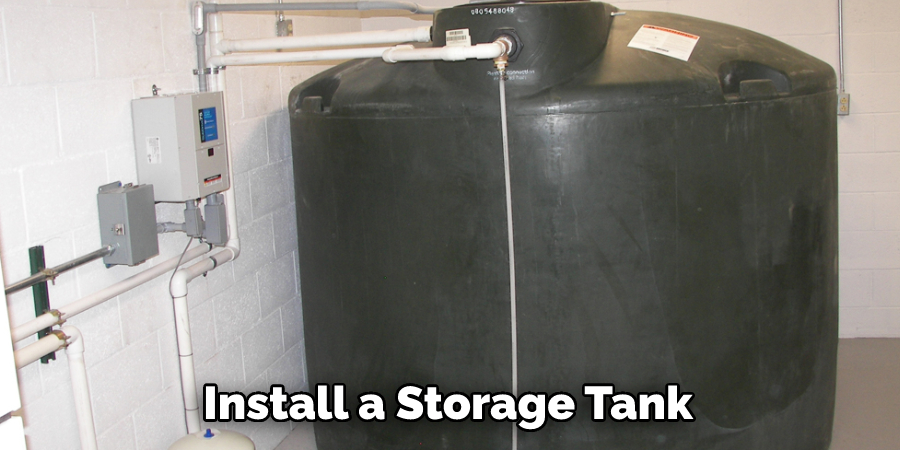
Step 9: Consider a Variable Speed Pump
If you are constantly experiencing issues with short cycling, consider installing a variable speed pump. These pumps can automatically adjust their operation based on water demand, helping to prevent excessive cycling and potential damage to the pump.
Step 10: Consider Alternatives for Water Supply
In some cases, it may be necessary to consider alternative water supply sources if your well is consistently having issues with short cycling. This could include installing a new well in a different location, connecting to a nearby municipal water supply, or using a different type of water systems such as an above ground tank or cistern.
It is important to weigh the cost and effort of these options against the continued inconvenience and potential damage caused by a malfunctioning well pump.
In summary, short cycling in a well pump can be caused by various factors, such as low water levels, clogged filters, faulty pressure switches, or improper sizing. Take steps to address these issues and regularly monitor and maintain the well pump to prevent future instances of short cycling.
5 Additional Tips and Tricks
- Make sure there are no clogs or obstructions in the well, such as sediment or debris build-up.
- Proper maintenance will ensure an efficient and long-lasting system.
- Make sure the pressure switch is functioning properly and set at the correct levels.
- Inspect and replace worn or damaged components, such as check valves or gauge readings.
- Always consult with a professional if you are unsure about any aspect of fixing or maintaining your well pump.
These tips can help prevent and fix short cycling in your well pump, ensuring a steady water supply for your home.
5 Precautions You Can Take
- Make sure the pressure tank has enough air pressure and is not waterlogged.
- Ensure that the pump is not oversized for your well’s output capacity.
- Have a plumber check for any leaks in your pipes, which can lead to short cycling.
- Don’t run too many appliances or water-using tasks simultaneously, as this can lead to the pump cycling more frequently.
- Regularly clean and maintain your well pump to prevent any issues from arising.
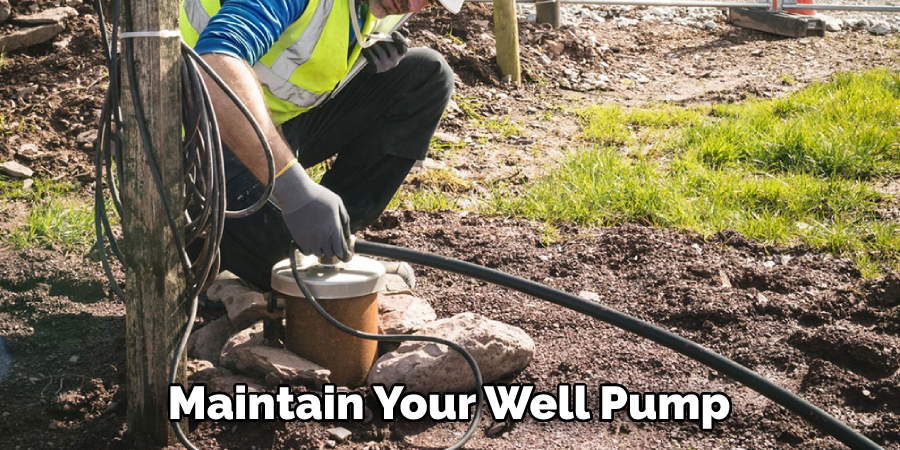
By taking these precautions, you can effectively fix a short cycling well pump and prevent it from happening again in the future.
How Can You Recognize Well Pump Pressure Switch is Bad?
- If the pump turns on and off frequently, even when there is consistent water demand, it could indicate a faulty pressure switch.
- The pressure gauge may not accurately reflect the water pressure in your system.
- The pump may have difficulty starting or maintaining steady operation.
- You may hear strange noises coming from the pump or pressure switch.
- Consult a professional if you suspect that your well pump’s pressure switch is bad or malfunctioning in any way.
Checking for these signs can help you recognize and address issues with your well pump’s pressure switch before they cause damage to your system.
Conclusion
To fix a short cycling well pump, it is important first to understand what is causing the problem. There are several potential causes, but the most common one is that the pressure switch is not working correctly. Once you have identified the cause of the problem, you can then take steps to fix it. With a few simple tools and some patience, you should be able to get your well pump back up and running in no time.
Hopefully, After reading this post, you should now better understand how to fix short cycling well pump. With the help of our troubleshooting guide, you should be able to identify and fix the problem quickly and efficiently.
So what are you waiting for? Let’s get to fixing that well pump and restoring a steady water supply for your home. Happy pumping!
You Can Check It Out To Fix Short Cycling Sump Pump

